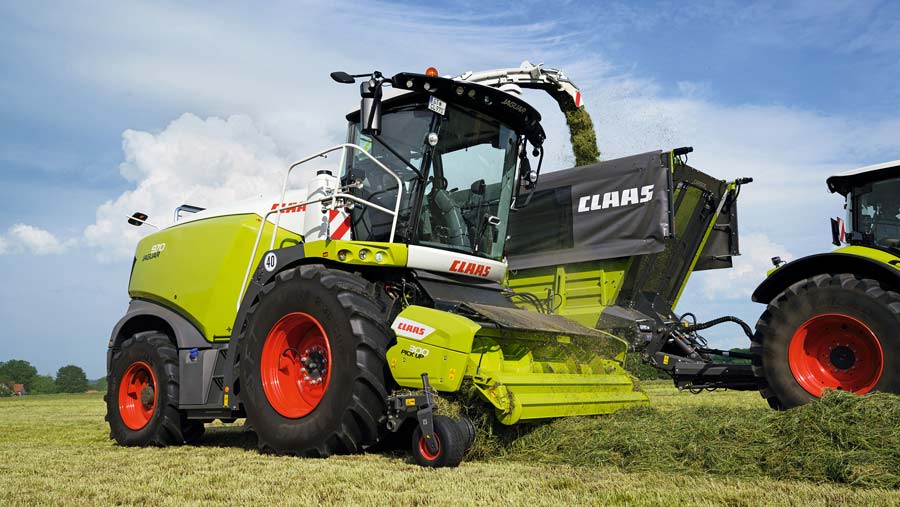Claas updates Jaguar 900 foragers
 © Claas
© Claas Claas has updated its Jaguar 900 forage harvesters, with improvements to the feeder unit, corncracker and silage additive system.
As well as the standard mechanical and variable drive options for the Pick Up grass headers, customers can now spec a twin hydraulic drive.
See also: High-hour Horsepower: 26-year-old forager still going strong in Herefordshire
This arrangement still sees the intake auger driven via a quick-release coupler, with its speed altered to suit the desired length of cut.
However, the pick-up reel can now be controlled independently, allowing for automatic or manual adjustment to match it with the forager’s forward speed.
This should improve the efficiency of the raking action, deliver a more consistent crop flow and reduce unnecessary wear. Claas says its trials have shown a 13.7% increase in throughput in extreme conditions, compared with an all-mechanical constant drive.
The company is also now offering a wear-resistant coating for its MCC Max corncracker, which can apparently extend the service life by four years.
Additive app
A new Claas Connect app can help operators set the correct silage additive application rate through the Jaguar’s on-board system, based on the crop type, yield and information provided by the additive manufacturer.
To calculate the required rate, operators must enter the expected yield, size of the area to be harvested, working width and speed, additive tank capacity and the recommended dosage.
This can be applied from the forager’s Actisiler 37 tank or larger 375-litre water tank, and in either litres/t or litres/hour.
There’s the option of doubling silage additive injection with the addition of a second dosing pump, allowing for a rate of up to 800 litres/hour on high-capacity machines applying in excess of 2 litres/t.
The firm’s 800 and 900 Jaguars are also now available with a water-injection system that may help performance in tricky crops such as grass with a very high sugar content.
This automatically fires water into the feeder unit, guide plate area, accelerator and discharge chute whenever there is no crop flow – such as at the headland – to prevent the build-up of material and help keep the dry matter or NIR sensor clean and accurate.
The water tank has a 375-litre capacity and application is controlled via the Cebis terminal.

